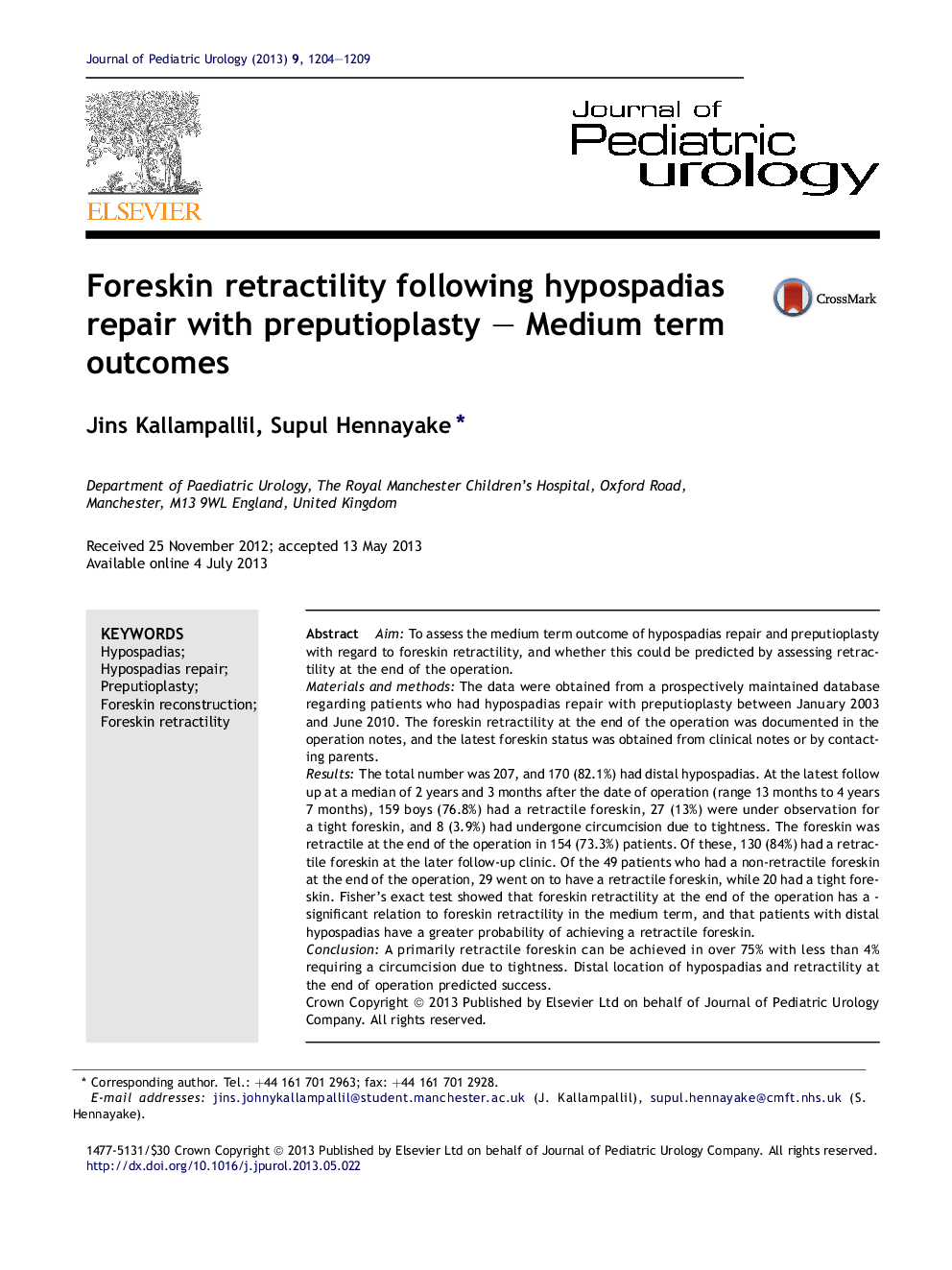| Article ID | Journal | Published Year | Pages | File Type |
|---|---|---|---|---|
| 4162431 | Journal of Pediatric Urology | 2013 | 6 Pages |
AimTo assess the medium term outcome of hypospadias repair and preputioplasty with regard to foreskin retractility, and whether this could be predicted by assessing retractility at the end of the operation.Materials and methodsThe data were obtained from a prospectively maintained database regarding patients who had hypospadias repair with preputioplasty between January 2003 and June 2010. The foreskin retractility at the end of the operation was documented in the operation notes, and the latest foreskin status was obtained from clinical notes or by contacting parents.ResultsThe total number was 207, and 170 (82.1%) had distal hypospadias. At the latest follow up at a median of 2 years and 3 months after the date of operation (range 13 months to 4 years 7 months), 159 boys (76.8%) had a retractile foreskin, 27 (13%) were under observation for a tight foreskin, and 8 (3.9%) had undergone circumcision due to tightness. The foreskin was retractile at the end of the operation in 154 (73.3%) patients. Of these, 130 (84%) had a retractile foreskin at the later follow-up clinic. Of the 49 patients who had a non-retractile foreskin at the end of the operation, 29 went on to have a retractile foreskin, while 20 had a tight foreskin. Fisher's exact test showed that foreskin retractility at the end of the operation has a significant relation to foreskin retractility in the medium term, and that patients with distal hypospadias have a greater probability of achieving a retractile foreskin.ConclusionA primarily retractile foreskin can be achieved in over 75% with less than 4% requiring a circumcision due to tightness. Distal location of hypospadias and retractility at the end of operation predicted success.
